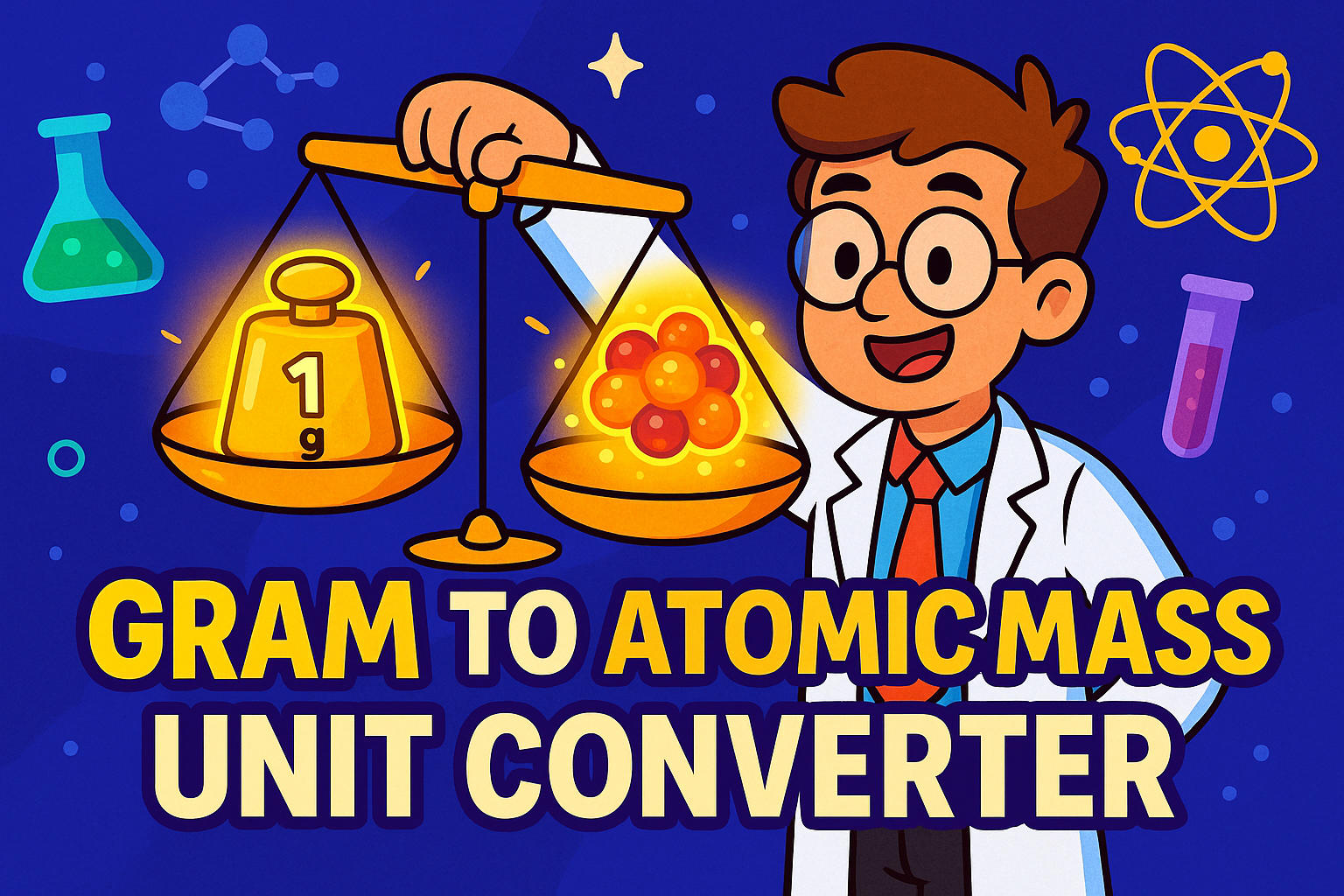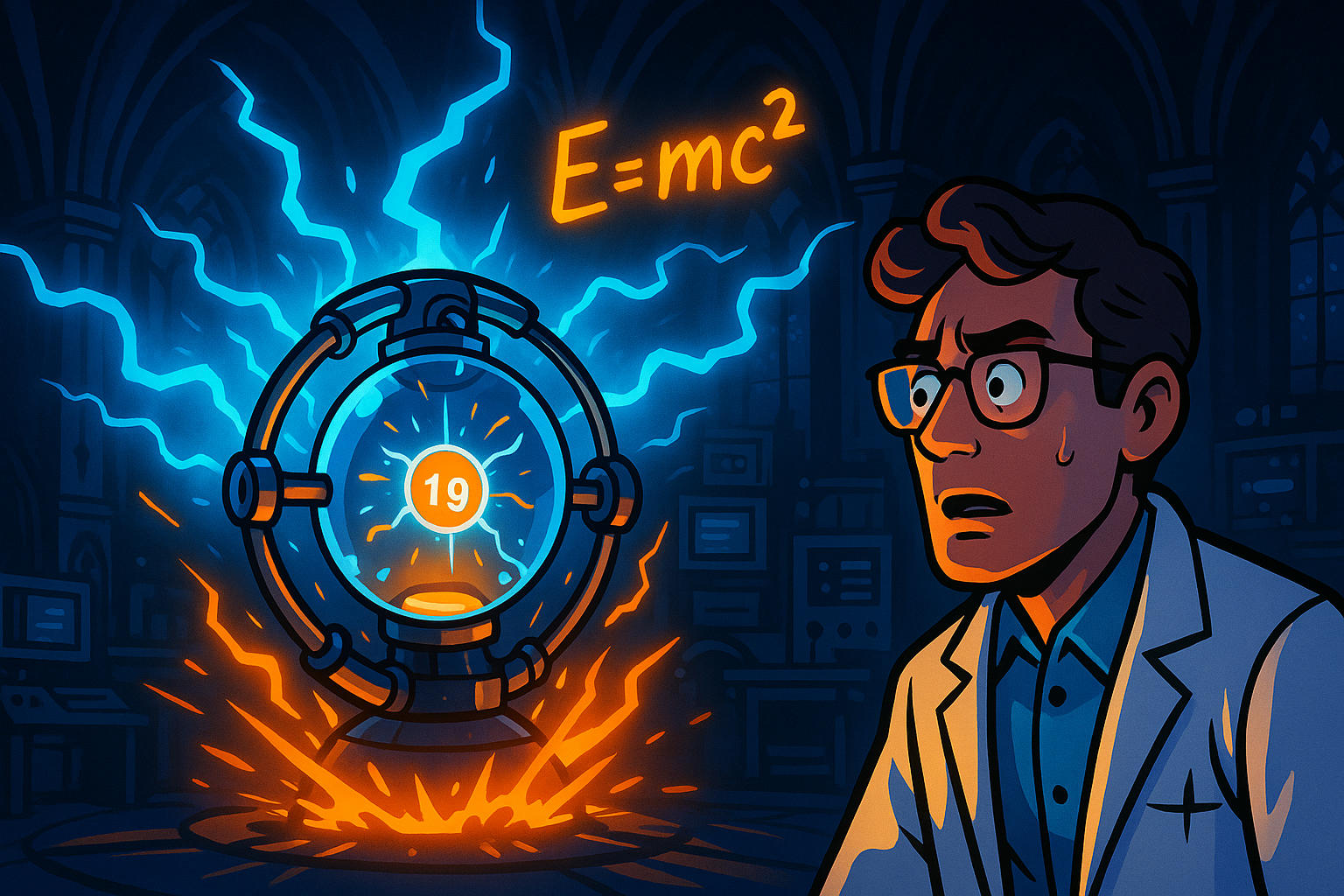Gram to Atomic Mass Unit – How to convert g to amu
Need to convert grams into atomic-level units? This guide will walk you through everything you need to know about converting Gram to Atomic Mass Unit (g to amu) — from definitions to historical fun facts and formulas you can use instantly.
What is a Gram?
The gram (g) is a standard unit of mass in the metric system, used globally in science, medicine, industry, and daily life. Defined as 1/1000 of a kilogram, it provides a practical unit for measuring small quantities. The gram was first introduced during the French metrication movement in 1795 and has since become one of the most common base units of measurement.
If you're working with metric conversions, tools like the Kilogram to Gram Converter can make the job much easier.
What is an Atomic Mass Unit (amu)?
The atomic mass unit (amu) — the unified atomic mass unit (u) — is used in chemistry and physics to express masses of atoms and molecules. One atomic mass unit is defined as 1/12 the mass of a carbon-12 atom, approximately:
1 amu ≈ 1.66053906660×10−27 kg
Because atoms are incredibly small, using grams to express their mass would lead to impractically small decimal numbers. Instead, the amu allows scientists to work with values closer to whole numbers when calculating molecular weights or atomic structure.

Conversion Formula: g to amu
To convert grams to atomic mass units, use the formula below:

This number reflects how many atomic mass units are in one gram — directly linking macroscopic mass to microscopic particles.
For quick results, try using our universal Unit Converter Tool
Did you know?
-
Gram:
The term “gram” comes from the Greek word "gramma", meaning “a small weight.” The gram was one of the earliest units introduced during the French Revolution to replace inconsistent local measurements with a rational metric system. It was initially defined by the mass of one cubic centimeter of water at 4°C. -
Atomic Mass Unit (amu):
The atomic mass unit played a pivotal role in the development of mass spectrometry, helping chemists identify isotopes and molecular structures. In fact, Francis Aston, who received the Nobel Prize in Chemistry in 1922, used the concept of amu to discover neon isotopes, reshaping atomic theory.
A Fictional Reality in Angels & Demons
In Dan Brown’s best-selling novel Angels & Demons, antimatter becomes a deadly plot device. Just one gram of antimatter, the book claims, could produce energy equal to a nuclear bomb. While the narrative is fictional, the physics is rooted in Einstein’s equation E=mc², where even a gram of mass carries enormous energy potential. This real-life principle bridges science fact and science fiction, showing just how powerful — and dangerous — mass at the atomic level can be.
Meanwhile, in real-world laboratories, scientists use grams and atomic mass units side-by-side to balance chemical equations, measure molecular weight, and engineer precise doses in medicine and research.

Conclusion
Whether you're a high school student, chemistry enthusiast, or professional researcher, learning how to convert Gram to Atomic Mass Unit (g to amu) deepens your understanding of both visible matter and the atomic world. From Weight Converters, digital tools make this scientific process more accessible than ever. And behind every conversion is a deeper appreciation of how the universe — from the tiniest atoms to massive stars — is measured, understood, and explored.

